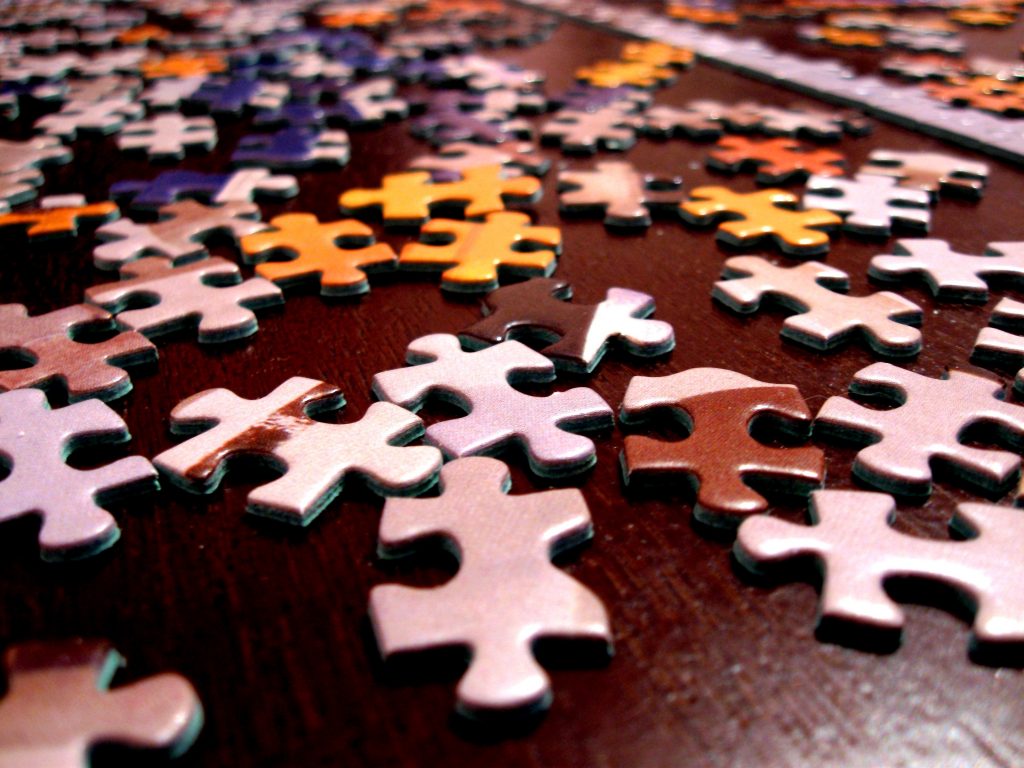Russian is a synthetic language. For linguists, this means that Russian connects words in a sentence with the help of numerous inflectional morphemes. For people who are not linguistically inclined (sorry for the unintended pun), this means that in Russian, words should be modified when put in a sentence according to what they are doing in the sentence. Without that modification, also known as inflection, sentences would not make any sense. From a practical point of view, this means that a learner of Russian should memorize each word as a set of its grammatical variations and make decisions regarding what variation to pick every time the word is needed in a sentence.
In my previous article, I wrote about cases and how they show the role a noun plays in a sentence. Mastering cases is an important step in learning Russian. Building a sentence in Russian is impossible without knowing how to modify each noun depending on whether it is a subject or an object, what preposition goes before it, and so on.
The real fun begins when you realize that it’s not only nouns. In Russian, everything should agree with everything else. Nearly every meaningful word in a sentence should be put into the correct grammatical form, i.e. modified in a certain way.
Think about building a sentence as a putting together a jigsaw puzzle. If English was a puzzle, all of the tiles would be perfectly square, and the challenge would be finding the right tile because there are so many seemingly similar pieces, but only one would perfectly match the specific picture. If Russian was a puzzle, all of the pieces would be oddly shaped, and you would need to pick the tile with the right tabs and cuts. When your Russian sentence is complete, each piece perfectly interlocks with the others, and all the rounded tabs, i.e. the endings, match their corresponding cuts.
If you still want to learn Russian, keep on reading. I’ll show you how to agree adjectives and nouns in Russian and share a few tips and tricks that have helped my students to overcome the difficulties of the Russian language.
Adjectives Take Nouns’ Gender, Number, and Case
English grammar books define adjectives as words that modify nouns. In Russian school books, adjectives are words that describe nouns and name their properties. Though the definitions differ a bit, they have one important thing in common: adjectives always refer to nouns.
The Russian way of thinking about adjectives is as properties of nouns, both objectively and linguistically. The noun “wood” refers to a certain object that we call “wood.” An adjective “wooden” doesn’t refer to any specific object, but rather refers to any object made of wood, and thus “wooden” needs those objects. The word “red” needs something, a thing that is of a red color. Or the word “serious.” Or “young.” You got the idea.
Linguistically, this means that adjectives should always be in the same gender, number, and case as their nouns. If a noun is masculine, the adjectives describing it should be masculine, too. Correspondingly, feminine nouns go with feminine adjectives and neuter nouns go with neuter adjectives:
Masculine: белый снег, white snow
Feminine: белая акула, white shark
Neuter: белое молоко, white milk
As you might have noticed, the information about the adjective’s gender is coded in its ending. Other grammatical information, such as number and case, are also coded in the ending:
Nominative Singular: белая акула, white shark
Nominative Plural: белые акулы, white shark
Accusative Singular: Я вижу белую акулу. I see a white shark.
Accusative Plural: Я вижу белых акул. I see white sharks.
You may have already done the math: 3 genders by 6 cases in singular, plus another 6 case forms in plural (in Russian, adjective endings in plural are the same in all genders) gives 24 different grammatical forms for each adjective. Though it may seem intimidating and discouraging, don’t panic. At least, not yet. The vast majority of adjectives have the same gender-specific set of endings. You only need to memorize those endings for masculine, feminine, and neuter adjectives once, and change each particular adjective accordingly:
Accusative Singular: Я вижу большую голодную белую акулу. I see a big hungry white shark.
See? All adjectives have the same ending, because they all are of the same gender, namely feminine, and in the same number and case.
How to Approach Adjectives
Though there are no shortcuts that would make memorizing unnecessary, you still can make the process more enjoyable. Familiarize yourself with all the grammatical forms of adjectives. Find a few different tables and charts online, compare them, and create your own table of endings/ case chart. That will help you to get the big picture and understand the case system better. Do not try to memorize those endings right away – that won’t help you to recall the right ending when speaking.
What will help you is adding adjectives when learning each individual case. When you work on this or that case, do not limit yourself with endings of nouns. Add a few different adjectives to nouns in your exercises and decline them along with the nouns.
Start writing as soon as you start learning cases. While exercises are good, the real practice begins when you put your thoughts into sentences in your target language. Writing is one of the two active language skills, with speaking being the other. If you have a language exchange partner, make writing/proofreading a part of your sessions. It doesn’t take a lot of time for a native speaker to correct your mistakes, and doing so would boost your studies tremendously. There are a few websites where you can post your texts for native speakers to correct. When writing, don’t forget to use adjectives, because they make your sentences more detailed and colorful. By doing so, you’ll expand your vocabulary and internalize the case system while having fun and indulging your creativity.


